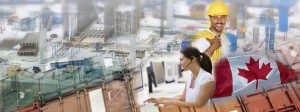What’s More Durable, Faster, Greener…
And a Stronger Investment over Decades

With the rise in high-speed data transfer for global businesses, shopping centres or your neighbourhood’s elementary school; everyone wants their digital devices to be faster, more available and resilient.
Whether that computer network is housed in a university data centre, branded coffee shop, corporate tower, international airport or a consumer’s smartphone / tablet; the speed, bandwidth and distance has to be exceptional. Coined FTTH – Fiber to the Home; these installations are also becoming more widespread as a method of delivering ultra high speed internet service (100 Mbps and higher) to residential communities.
- The Narrower Single Stand or Higher Bandwidth Single Mode Cables with Transparent Glass
- The Thicker Multimode Cable with Plastic Fibres or the POF; a Plastic Based Cable for Minimal Distant Runs and Equivalent Performance (to glass cables) at an overall Lower Price Point
Did You Know?
The Key Advantages of Fibre-Optics (over Copper):
Signal Frequency:
Fibre optic networks maintain a high data rate (gigabits) frequency by transmitting “light pulses” or “light emitting diode” effortlessly along cables coated with a mirror on the inside. Conversely, the traditional copper networks send “electronic pulses” or “electric currents” down cheaper cable lines. As the demand for wireless connections from 100s to 1,000s of users peaks throughout the day; the resulting loss of signal frequency and slower data transfer rate is the weakness of copper, and conversely, principle strength of Fibre.
Bandwidth and Distance:
Fiber-optic networks offer in excess of 1,000 times as much bandwidth over distances exceeding 100 times further. Once the light pulses have been transmitted, the fibre-optic cable system “stands alone” with no need to restore or reinforce the original signal.
Resistance:
Fibre is far more durable and possesses superior protection from electrical interference (cables, radios, motors etc). Conversely; due to the “pull demand” of copper behind walls, this system is more vulnerable to damage during the installation phase and is easily interrupted by electromagnetic noise being emitted on the job site.
Sustainable:
When correctly installed, the long-term maintenance of a Fibre-optic cable is far less than copper.
Many kilometers of fibre-optic cable is more cost-effective than comparable miles of copper cables.
Fiber optic cables are also thinner than copper, and fibre can deliver a much greater power. The fibre network experiences lower signal degradation than copper wire while utilizing less power.
Help Your Customer Make The Big Switch to Green Power!
Featured Fibre Optic ProductsIf not; over time, today competitive environmental will replace that system with a better solution. It’s all about Reinvention (of your Products and Services) or suffer the Decline (of your marketshare and customer list).
Contact Us Today

 "...Your same day response time allowed my very expensive technical team from California and Montreal to proceed with the installation of our fleet management mobile computing solution as planned.
I would definitely recommend your services to anyone..."
"...Your same day response time allowed my very expensive technical team from California and Montreal to proceed with the installation of our fleet management mobile computing solution as planned.
I would definitely recommend your services to anyone..." 




